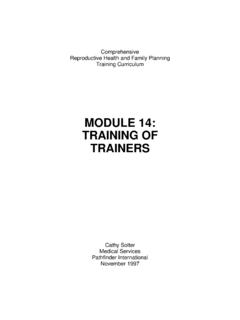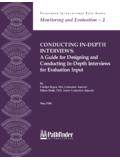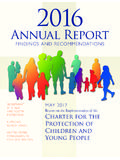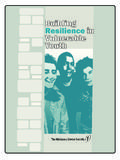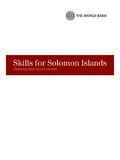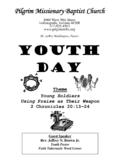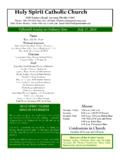Transcription of Youth-Friendly Sexual and Reproductive Health Services: An ...
1 Youth-Friendly Sexual and Reproductive Health services : An Assessment of Facilities AYA/Pathfinder 2003 Photo by Richard Lord 2 TABLE OF CONTENTS Acronyms and Acknowledgements ..4 Executive Summary ..5 Background ..8 youth friendly services : The Concept and Guiding The Needs Assessments for YFS in Tanzania ..18 Analysis and Implications of the Facility Assessment Results ..24 Recommendations and Conclusion ..25 3 AACCRROONNYYMMSS AANNDD AABBBBRREEVVIIAATTIIOONNSS AIDS - Acquired Immune Deficiency Syndrome ASRH - Adolescent Sexual and Reproductive Health AYA - African youth Alliance BCC - Behaviour Change Communication FGD - Focus Group Discussion FP - Family Planning HIV - Human Immunodeficiency Virus IEC - Information.
2 Education and Communication MoH - Ministry of Health NACP - National AIDS Control Programme NGO - Non-Government Organization PAC - Post Abortion Care PE - Peer Educator PI - Pathfinder International RH - Reproductive Health SDP - Service Delivery Point SP - Service Provider SRH - Sexual and Reproductive Health STIs - Sexually Transmitted Infections TDHS - Tanzania Demographic Health Survey TRCHS - Tanzania Reproductive and Child Health Survey WHO - World Health Organization YFS - youth friendly services 4 AACCKKNNOOWWLLEEDDGGEEMMEENNTTSS The Africa youth Alliance (Tanzania) and Pathfinder International (Tanzania) offices coordinated the task of carrying out facility needs assessments for youth friendly services in eleven facilities in Tanzania between July and October 2002.
3 The exercise was undertaken as a follow-up to another one conducted partly as a pre-project assessment for youth friendly services . The first task looked into broader issues for YFS, including policy, programming and service delivery. The facility needs assessments were confined to the proposed facilities and looked into issues such as the location, the hours of operation, the infrastructure, staffing and provider preparedness, range and quality of services , youth involvement, and supportive policies and administrative procedures. The assessment covered 11 facilities as follows; (i) Ngarenaro Health centre, (ii) Tarime district hospital, (iii) Kaloleni Health centre, (iv) Levolosi Health centre, (v) Mbagala dispensary, (vi) Infectious Disease Centre (IDC), (vii) University of Dar es Salaam RH clinic, Marie Stopes clinics in (viii) Ilala, (ix) Zanzibar, (x) Arusha and (xi) Mwenge.
4 A combination of Pathfinder staff, AYA staff and personnel from some of the implementing partner organizations were involved in conducting the assignment. AYA Tanzania and Pathfinder International (T) are indeed very grateful to the following for undertaking the task successfully: Naomy Achimpota, Gwyn Hainsworth, John Bosco Basso, Nsiima Mushumba, Paul Luchemba, Joan Mngodo, Lilian Mnzava, Dick Manongi, Joan James, Kania Msuri, Rose Baruti and Joyce Ferizi. They are especially thanked for their endless efforts to make sure that the exercise went smoothly. Special thanks go to the heads of the organizations/institutions that were visited.
5 Their commitment and valuable assistance in logistics and facilitation of assessments made the work easier. Indeed, sincere appreciation goes to all those who were interviewed and involved in the discussions for their willingness to share their knowledge and experiences. AYA Tanzania and Pathfinder International (T) would like to put on record that, all parties involved showed great interest and commitment during the field visits, as well as during informal and formal discussions. Specific thanks also to Dr. Gottlieb S. Mpangile for reading the various assessment reports and drafting this document. AYA Tanzania and Pathfinder International (T) consider this overview to be a sound basis for future plans to develop and implement effective youth Sexual and Reproductive Health (YSRH) programmes and services in Tanzania.
6 5 EXECUTIVE SUMMARY young people in Tanzania are at risk from a broad range of Health problems. Sexual and Reproductive Health behaviors are among the main causes of death, disability and disease among young people. They are at particular risk for unwanted pregnancy and related complications, STIs and HIV/AIDS. The need for Sexual and Reproductive Health services for young people has, over the past years, become particularly critical for a number of reasons. Societal change caused by modernization and urbanization has led to the loosening of family ties, leaving many young people unable to rely on intergenerational relationships for information and guidance about responsible Sexual behavior.
7 As the gap between the generations is reinforced by cultural globalization, young people are increasingly left to learn about Sexual issues from their peers or from the mass media. One out of every three Tanzanians is a youth between the ages of 10-24. This implies that the Sexual and Reproductive Health needs of youth cannot be ignored, given their numerical strength and, indeed, on the understanding that they are the future of the nation. young people face a number of SRH problems in Tanzania, including early Sexual debut, unplanned teenage pregnancy, STIs and HIV/AIDS, unsafe abortion, female genital cutting (FGC), and Sexual abuse/violence.
8 The Reproductive Health needs of young people have been largely ignored by existing Reproductive Health services . Health care facilities can play an important role in promoting the Sexual and Reproductive Health of young people. This can be achieved by improving the quality and range of services provided to youth and, in particular, by Health care providers maintaining a friendly and open attitude as they impart accurate information and impartial advice. The African youth Alliance (AYA), a project implemented by UNFPA, PATH, and Pathfinder, has identified some of the critical issues affecting the Sexual and Reproductive Health status of young men and women in the country.
9 One of the strategic approaches of AYA is to make Reproductive Health care services more accessible and acceptable to youth . This implies making the services Youth-Friendly . Prior to starting programme activities, AYA conducted a needs assessment to determine the programming needs related to implementing Youth-Friendly SRH services within the Tanzanian context. The assessment looked into broader issues, including the policy environment, programme planning and implementation, and service delivery strategies. As one of the first program activities, facility assessments were conducted in all the sites that AYA had selected to provide Youth-Friendly SRH services .
10 This second round of assessments examined the extent to which facilities are youth friendly by assessing infrastructure, operational hours, location, service provision, staffing and provider preparedness, youth involvement, and policy and administrative issues related to service delivery. The two assessments found a number of gaps within the current service delivery framework, including: The services are designed for the adult client and service providers are not trained in adolescent sexuality and Youth-Friendly SRH concepts; 6 Many of the facilities working environments are not youth friendly , and services for adolescents are poorly publicized; Service provider attitudes and biases are a great barrier to adolescent services ; Service providers do not have access to any policies, protocols or standards/guidelines related to providing quality Youth-Friendly SRH services .
